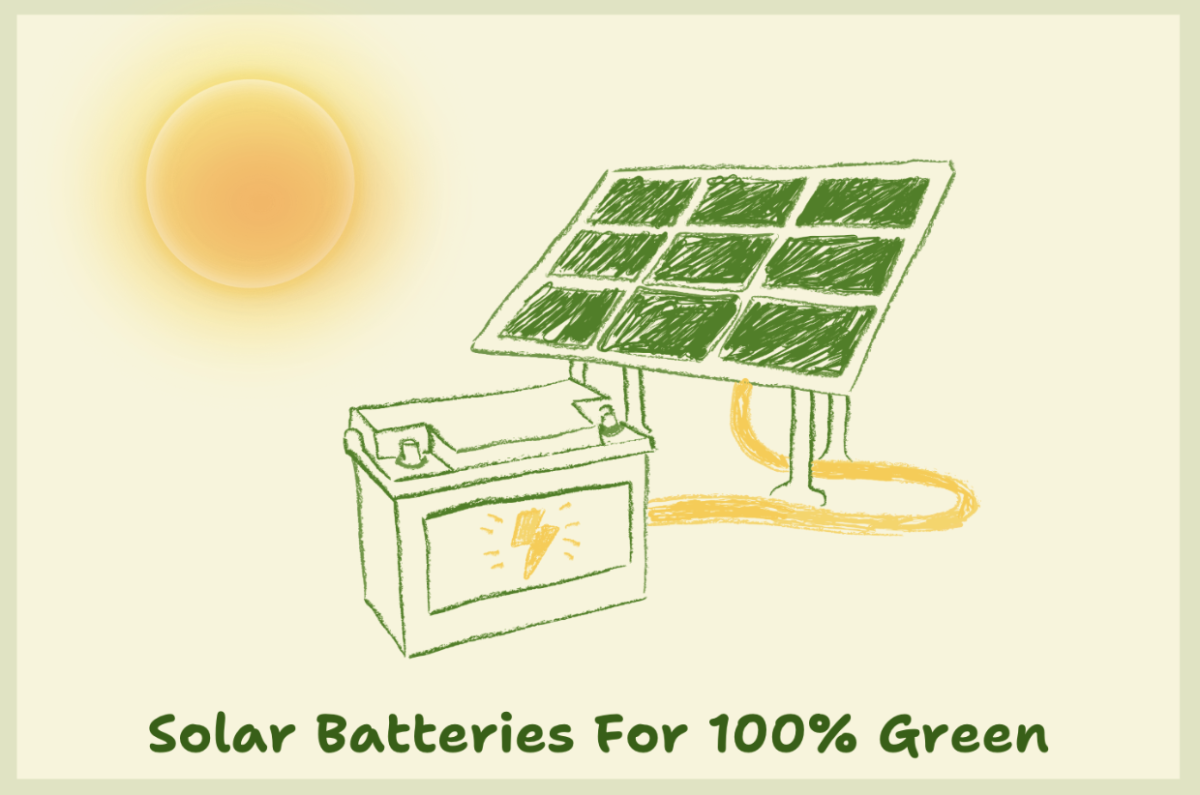Green energy is great! Even so, there are some common arguments against it. With nuclear, the problem is waste and health issues. With wind, the issue is how to collect energy when the wind isn’t blowing. And with solar, politicians and civilians alike still argue that it’s useless when the sun isn’t out.
However, this rhetoric is outdated. Solar energy has become significantly more reliable in previous years, particularly in California, due to one thing: Batteries. In the past 5 years, California has drastically increased its battery storage capacity, from 770 MW to 10,379 MW. These batteries store solar energy when it’s collected and then provide that energy when the sun is down. When the New York Times compared California’s daily energy usage between 2021 and 2024, they found that batteries use a lot of solar to power the energy grid, particularly during peak demand at 8 p.m. Batteries are getting so much use in California that they are actually starting to rival natural gas. This April, a fleet of batteries provided 7,000 MW, close to what gas was producing at the same time. “Batteries are quickly moving from these niche applications to shifting large amounts of renewable energy toward peak demand periods,” said Helen Kou, head of U.S. power analysis at a research firm.
The best thing that this increase in battery usage has brought on is that it counteracts blackouts. Many will remember the 2022 summer heat waves and blackouts when the California Independent System Operator (ISO) called upon consumers to voluntarily conserve electricity in Flex Alerts for 10 consecutive days. This summer, temperatures once again reached record highs, and the 2-week heat wave called for 44,000 MW at its peak. This time, however, with 55,000 MW on hand, the ISO made it through the entire heat wave with only a few blackouts and no Flex Alerts. Recall that solar batteries made up more than 10,000 MW of this reserve, providing some serious cushion to keep the grid up for millions of residents.
By far, the batteries we have right now are doing significant work to make the grid more sustainable. With global warming, temperatures will only continue to rise, so California will have to keep up these sustainable energy sources in the energy grid either way.
But is the path to 100% green really that clean-cut? The goal in California is still 60% renewable energy sources by 2030, 90% by 2035, and 100% renewable by 2045. In 2022, the California grid was on 54% renewable or carbon-free energy sources. How do we bridge the gap? According to Governor Gavin Newsom, batteries are part of the solution. At 10,000 MW of battery storage capacity right now, the state says it will need 52,000 MW to meet its climate goals. “This is critical to how we achieve 100% clean energy by 2045,” Newsom said.
Other experts comment on the big play California has made with batteries. “It’s really great news all around, the fact that they’re keeping the lights on with clean, carbon free energy,” said Rob Gramlich, president of power sector consulting firm Grid Strategies. “I think the state was smart to take an early bet on battery storage. A lot of states were skeptical, but California went in big and it’s working.”
But, how sustainable are these batteries? The giant batteries California has been using are lithium-ion batteries, which use minerals mined through either open-pit mining or brine extraction. Open pit mining is where a deep pit is created for mining. It can cause erosion and sinkholes, and can contaminate nearby water, air, and soil with toxic minerals. In brine extraction, lithium is extracted from brine and water pumped from deep underground, after large amounts of water is evaporated. This process uses upwards of 500,000 gallons of water for every ton of lithium mined, meaning that the lithium battery industry has serious environmental drawbacks.
However, it’s important to remember that California’s giant batteries are by no means the only contributors to lithium battery usage. Lithium-ion batteries are incredibly common, used in almost all consumer electronics and electric vehicles. Overall, it seems that expanding California’s battery storage will still be crucial for lowering carbon emissions and achieving 100% renewable energy.


